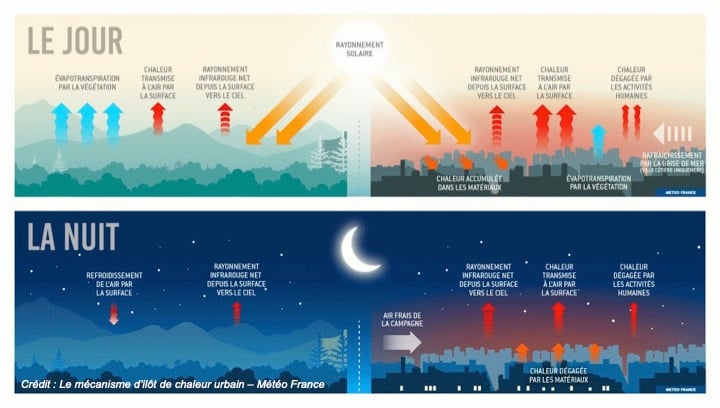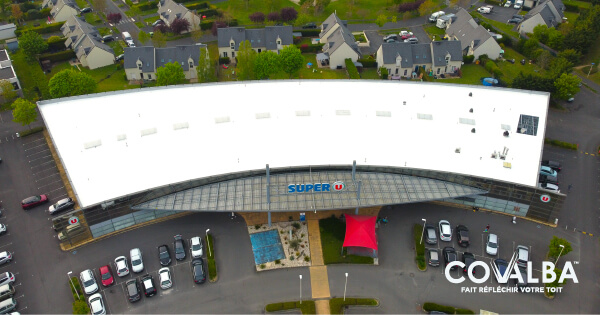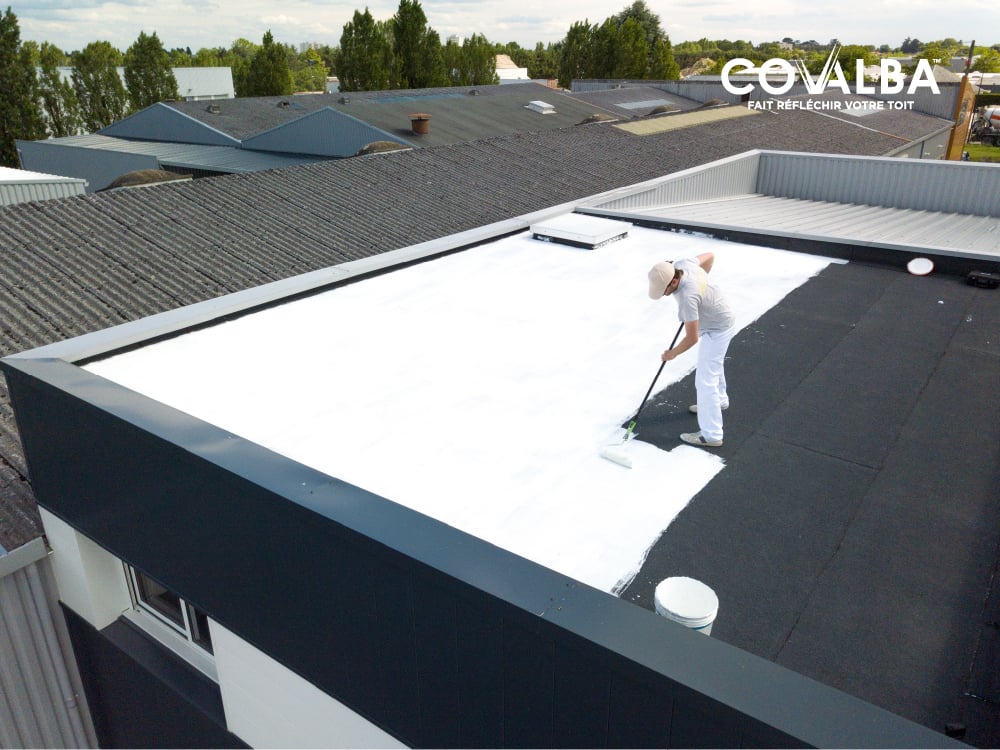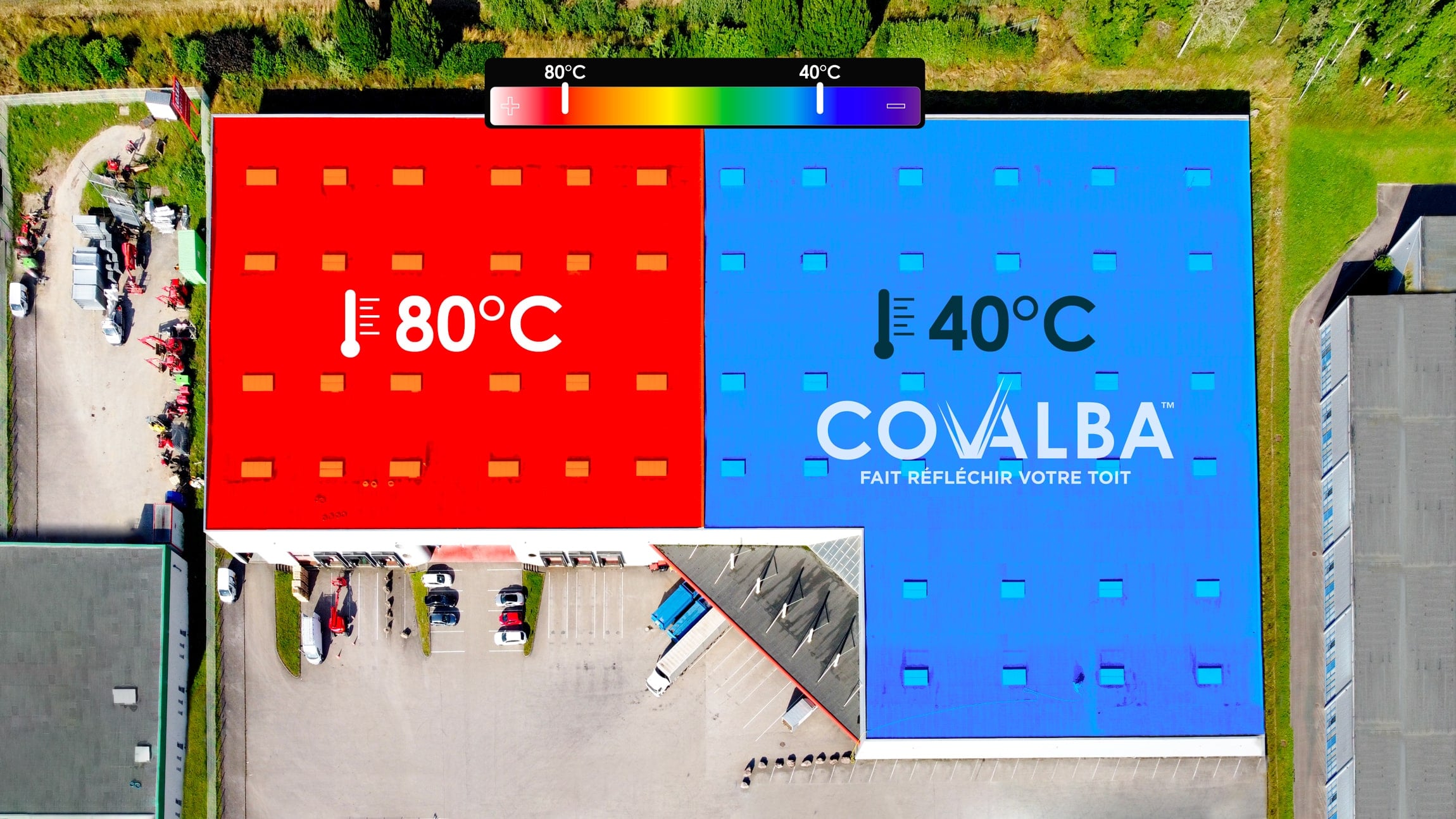Global warming is a major social issue. The global awareness of governments in many countries is leading them to adopt policies to reduce greenhouse gas emissions. In the midst of all the measures and innovations taken to limit the impact of climate change, a few solutions manage to stand out. This is particularly true of the cool roof, which the IPCC says is one of the most effective ways of adapting to climate change. Painting roofs white is a real and lasting commitment to the energy transition.
What are the impacts of global warming on cities?
It is estimated that the earth is already 1.2 degrees Celsius warmer than in the pre-industrial era. If the excess heat exceeds two degrees Celsius, forecasts predict colossal changes for our societies.

In all concreted areas, atmospheric warming will amplify the urban heat island effect. The sun's increasingly intense rays heat up the roofs and roads of urban areas. This surface heat helps to raise the ambient temperature in the city, creating a dome around it as the heat struggles to escape.
How do white roofs help combat global warming?
To combat the urban heat island effect and, more generally, rising temperatures, painting roofs and roads white is proving effective. This method was initially tested in Los Angeles, where the ground temperature of roads contributes to a drastic rise in the city's overall temperatures. In view of the excellent results obtained, the method has become more widespread in the United States, particularly in New York. Applying white paint to buildings has been used for centuries in Greece and Morocco, for example.
It may seem strange that simply coloring a surface should help combat climate change. Painting roofs white can significantly reduce the surface temperature of materials, as well as the temperature inside buildings.
The use of reflective white paint on the roof reflects the sun's rays back into the atmosphere. As a result, the roof does not store the heat generated by the sun's rays, preventing it from spreading to the rest of the building's structure.

White roofs therefore combat global warming in two different ways. Firstly, by reducing the temperature of the building, it is possible to limit the use of air conditioning. In France, the energy sector is one of the biggest producers of greenhouse gas emissions. Moreover, the reflection of solar radiation back into the atmosphere has a direct positive impact on global warming.
Read our full report on reflective paints and roofs.
What are the technical features of a cool roof?
Cool roofing is the application of a white, heat-resistant paint over the entire roof surface. The product used is a white coating with a high solar reflectance index (SRI).

The most effective white heat-repellent coatings reflect up to 94% of the sun's rays.
Thanks to the technical properties of the cool roof, two reactions can be observed. Firstly, with the best-performing products on the market, the surface temperature of the roof is limited to a maximum of between 35 and 40 degrees. Without the use of a cool roof, a roof can usually heat up to 85 degrees Celsius. Moreover, as a direct consequence of this limitation, the building's interior temperature can be reduced by more than ten degrees.

To find out more :